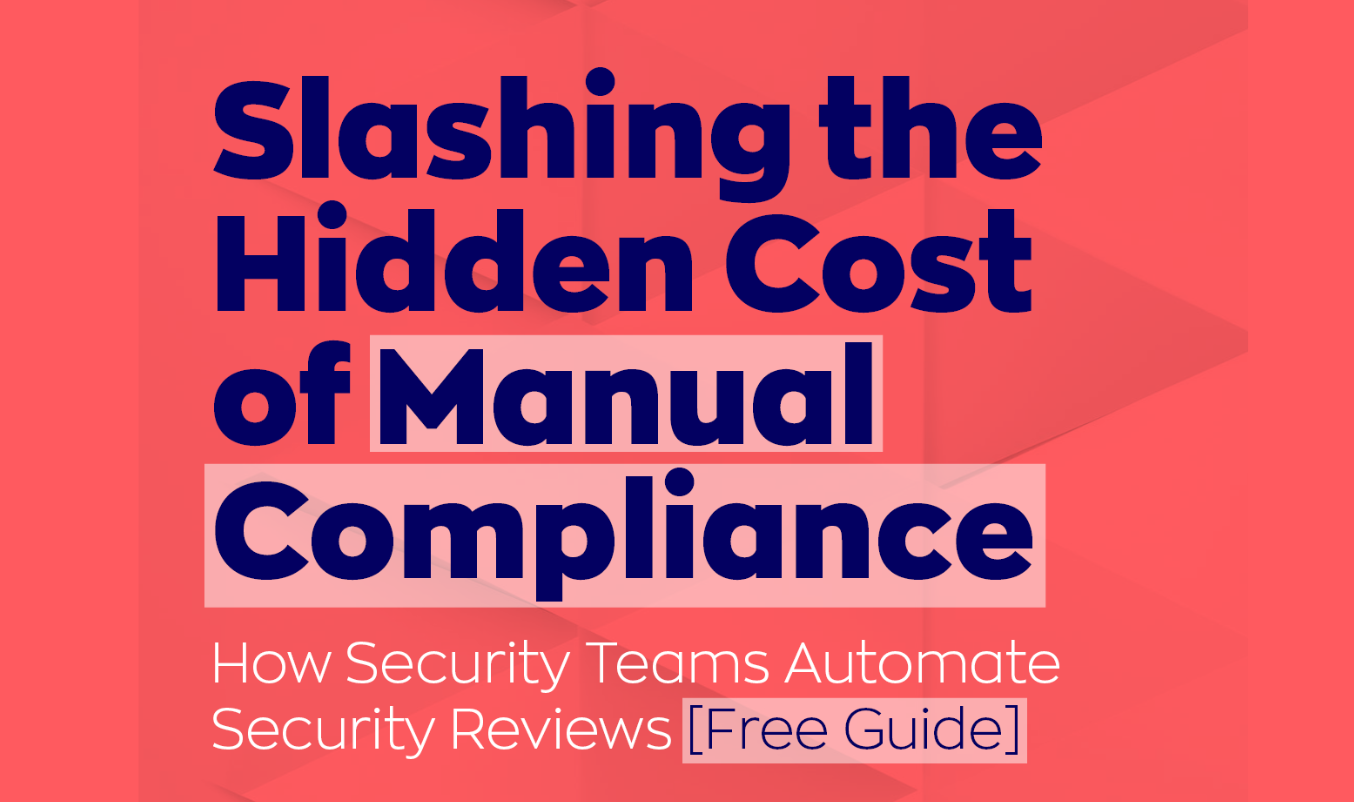Securing Social Media in the AI Era: Practical Insights for Cybersecurity Experts

Imagine scrolling through your Facebook feed and finding a video of your CEO making controversial statements. It seems authentic, but in reality, it's a deepfake – an AI-crafted illusion, strikingly realistic yet entirely fabricated.
This reality highlights the complex role of AI in social media, where it isn’t just a tool for user engagement but also a conduit for sophisticated cybersecurity attacks.
In this article, we explore how AI is reshaping cybersecurity, focusing on the strategies cybersecurity experts and CISOs are adopting to protect against AI-driven threats while harnessing their potential for positive impact.
How Are Security Experts and CISOs Responding to The Challenge of AI in Social Media?
While artificial intelligence has many legitimate benefits, it has made malicious activity much more vigorous, especially on social media platforms. This includes convincing deepfakes, misinformation campaigns that are nearly impossible to recognize, and blended cyberattacks that target users through multiple avenues
Cybersecurity professionals and CISOs are employing advanced AI technologies and evolving traditional tactics to counter these emerging threats.
Let’s explore what’s happening, starting with social media companies’ responses.
What Are Social Media Companies Doing?
TikTok
With generative AI technology becoming more accessible, there's a noticeable uptick in altered content popping up – like the made-up CNN story claiming that climate change is only seasonal.
TikTok’s security team tackles misinformation with:
- Automated detection reports that identify false content, especially during high-risk events like elections or natural disasters
- Fact-checking by independent, international fact-checkers
- Moderation teams that assess content's accuracy and apply policies
- Unverified content labels that limit the spread and visibility of uncertain content
- AI-created content labels that encourage creators to mark AI-altered content, clarifying modifications for viewers
Meta
Similarly to TikTok, Instagram (Meta) takes several steps to limit the spread of false information:
- Reduced visibility for misleading content to hide it from Explore and hashtag pages
- Detection technology that uses image-matching to identify and label false content across Instagram and Facebook
- Warning labels that mark false posts with fact-checker ratings and debunking articles
- Removing posts and accounts spreading misinformation in line with their Community Guidelines
In addition to misinformation, hackers are finding creative ways to steal information from Instagram users, i.e., by exploiting Instagram users with counterfeit copyright infringement warnings.
Meta’s security team advises users to exercise caution with suspicious links and emails and to enable two-factor authentication as part of its phishing defense measures. But, beyond these conventional recommendations, users are responsible for their own protection.
Is This Enough?
In one word, no.
Despite these efforts by social media cybersecurity teams, we continue to see AI-generated content crop up and do irreversible harm. Additionally, many platforms aren’t reaching quickly enough; for example, Meta doesn’t have specific rules related to AI-generated political ads.
The underlying issue is that their security approach is reactive rather than proactive.
Despite them removing harmful content after it appears, there is little that actually prevents cybercriminals and bad actors from posting in the first place. This means that, while they do limit the damage, there’s still plenty of time for GenAI content to harm users, companies, and societies.
For this reason, it’s vital for cybersecurity leaders to take things into their own hands when dealing with AI risks on social media to create a truly comprehensive solution.
Let’s take a look at what companies are doing on their own to deal with these cyber threats.
What Are CISOs and Cyber Experts Doing in the Wider Tech Industry?
AI-Powered Deepfake Detection
In the face of these risks, CISOs are adopting AI-powered solutions to combat deepfakes.
Since its pioneering launch in 2018 as the first company to commercialize deepfake detection technology, Sensity has specialized in providing versatile algorithms designed for comprehensive forensic checks across all forms of audiovisual content.
By integrating Sensity's deepfake detection technology, cybersecurity professionals enhance their organization's ability to identify and counteract sophisticated disinformation campaigns that use deepfakes to undermine trust and spread false information on social media platforms.
In practical terms, cybersecurity teams leverage Sensity's algorithms to automatically scan and analyze incoming content, flagging potential deepfakes for further review to prevent them from being seen by vulnerable parties.
This proactive approach enables organizations to quickly respond to and prevent the spread of deepfakes before they can cause harm, preserving the integrity of their digital communications and protecting their brand's reputation online.
Facial Recognition
OARO, a Spanish startup, also provides strategic solutions to combat AI-powered cyber threats like deepfakes and phishing attacks in the form of facial recognition technology.
AI is fuelling continuously evolving cyber attacks – meaning that the old tried-and-true security methods, such as two-factor authentication, are no longer sufficient. New measures must be developed to stay ahead of the game, and OARO is doing exactly that.
OAROID scans and stores a user’s biometric data and utilizes it as another layer of security in the verification process, similar to two-factor authentication. This makes it exponentially harder for blended cyberattacks to gain access to assets and credentials.
For cybersecurity professionals, integrating OARO's capabilities, including their mobile application, into your security framework enables proactive verification of media shared on social platforms.
OARO's solution establishes an unalterable data trail, essential for tracking digital content origins and ensuring integrity. This supports compliance with data security regulations and enhances responsiveness to social media cyber threats.
Third-Party Vendor Risk Assessment
The interconnected nature of modern business means that the security of our data is only as strong as our weakest link.
Assessing the cybersecurity readiness of our third-party connections is vital to prevent data breaches and leaks caused by AI-powered social media threats.
Security teams in the wider tech industry are implementing vendor risk assessments to evaluate and manage the risks associated with third-party vendors who have access to their firm's social platforms and sensitive data.

Here are steps you can take to assess vendor risk related to AI-powered social media threats:
- Identification: Begin by compiling a comprehensive list of all vendors involved in your social media operations, regardless of their size or role. This includes entities providing services related to content management, cybersecurity, and data analytics.
- Categorization: Rank vendors based on their significance in safeguarding your social presence and the potential risks they may introduce. Vendors handling user data or content moderation may pose higher deepfake and phishing risks.
- Criteria development: Define clear standards to evaluate each vendor's ability to combat social media threats. Consider factors such as their expertise in AI detection, response speed to emerging threats, and track record in combating misinformation.
- Data collection: This could entail scrutinizing contracts to grasp their legal commitments or assessing their cybersecurity measures with automated security questionnaires.
- Privacy: Carefully review vendor privacy policies and practices to ensure the safety of any business or customer data being shared. Clarify what data the vendor is storing, as the more data being stored, the more difficult it is to keep private.
- Risk scoring: Assign risk scores to each vendor based on their preparedness to combat social media threats. This scoring system helps identify vendors with the highest potential impact on threat mitigation.
- Mitigation strategy: Develop strategies to enhance your social media defenses, particularly in collaboration with high-risk vendors. This involves conducting joint threat simulations, aligning response strategies, and implementing AI content moderation.
- Documentation and reporting: Maintain meticulous records of all assessments and actions taken to bolster social media security. These records serve as essential documentation for internal reviews and regulatory compliance.
- Continuous monitoring: Recognize the dynamic nature of social media threats and the need for ongoing vigilance. Continuously monitor vendor capabilities and adapt strategies to respond to evolving deepfake, phishing, and echo chamber challenges.
By conducting these comprehensive assessments, CISOs can effectively manage the increased risks associated with advanced AI technologies and third-party engagements.
Gathering Threat Intelligence
Information security professionals and security teams can leverage social media as a rich source of threat intelligence to safeguard their organizations from AI attacks.
For example, a study from Trend Micro analyzed Twitter (X) interactions to map out networks and understand the spread of misinformation. Their investigation revealed connections and anomalies among accounts by analyzing interactions such as follows, quotes, and retweets.
Using tools like TWINT and Twitter's APIs, security experts identified key accounts and clusters central to these networks. These findings showed how certain accounts drive most activity while others spread their messages – highlighting a guru-follower dynamic with bots amplifying content:

By mapping out social networks and identifying the central figures within targeted misinformation, deepfake, and hacktivist campaigns, CISOs can tailor their company’s strategies to counter and disrupt the spread of deceptive content far more effectively.
This includes enhancing detection mechanisms, refining responses, and collaborating with social platforms to address and mitigate threats, aiming to safeguard their reputation and operations from the adverse effects of coordinated AI attacks.
Key Takeaways for Securing Social Media in the AI Era
Security on social media cannot be overlooked.
Despite platforms' efforts with AI and anti-phishing policies, enormous gaps remain, highlighting that social media companies aren’t doing enough to combat sophisticated threats.
CISOs must step up and take control of their organization’s social media security – leveraging advanced tools like deepfake detection, facial recognition, threat intelligence, and comprehensive third-party risk assessments – to respond to AI challenges.
Next, take a look at our deep dive into the complex web of cybersecurity to discover six expert opinions on crucial cybersecurity themes like human vulnerabilities, strategic partnerships, compliance, privacy, and vendor-related risks.
.png)








.png)
.jpg)
